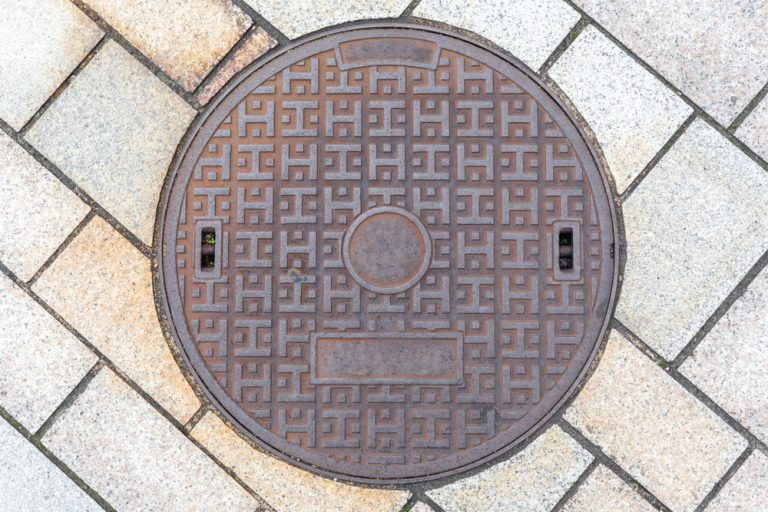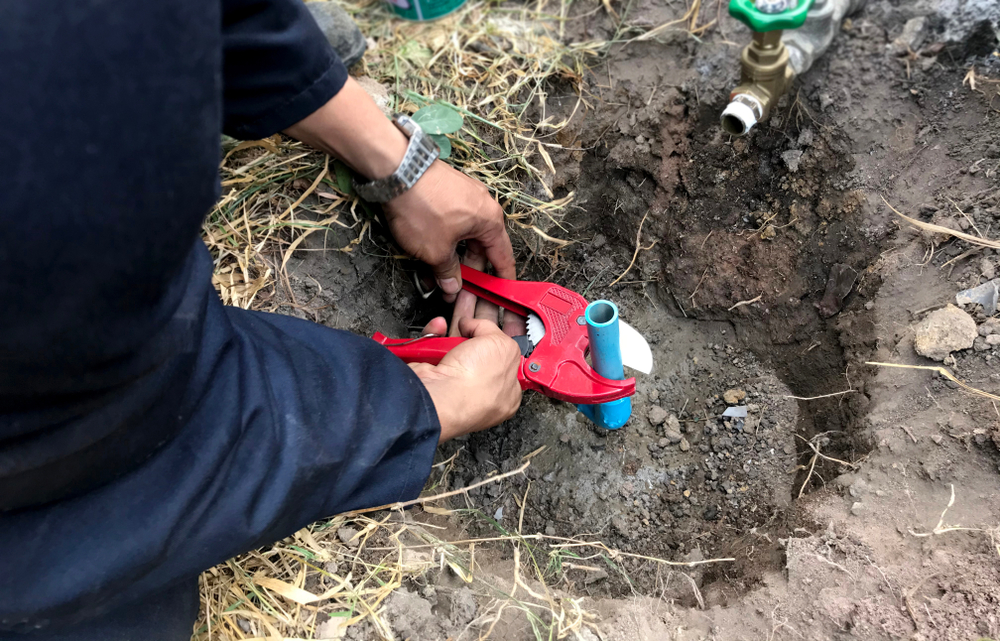While both septic systems and sewer systems remove wastewater from your home, a septic system treats the wastewater under your property while a sewer system routes it underground to a treatment plant.
In many municipalities that are connected to sewer systems, some homes remain on a septic system.
If this is the case for your home, it is possible to switch from a septic system to a sewer system. Before we explain how let’s look at how a sewage system works as well as the benefits of making this switch:
How Does a Sewage System Work?
When your home is connected to a sewage system, wastewater is flushed through pipes toward a treatment plant operated and managed by your town or city.
The sewer waste is first processed when it is pumped from your home through pipes to filters that separate large objects from the water. A grit chamber will then filter out mud, sand, and smaller debris.
The sewage then flows into tanks where solids will be further separated into water and sludge. This is transferred to the treatment plant where oxygen is added to the liquid to encourage microorganisms to consume the leftover waste.
So, as you can see, sewage treatment works similarly to your septic system, except on a larger scale!
The Benefits of Switching to a Sewer System
Most homeowners look at switching from a septic system to a sewer system when their septic tank is in need of replacement.
While the cost of replacing a septic system and the cost of connecting to a sewer system are comparable, there are other benefits to switching to a sewer system:
Less Responsibility
When you connect to a sewer system, there is one less thing to service in your home.
Wastewater treatment is handled by the government so you don’t have to worry whether or not the wastewater is being properly treated and disposed of.
Septic tanks need to be properly maintained in order to reach their lifespan and preserve the value of your property – and it is your responsibility to ensure that the pipes and tank are in good shape and working order.
Inclement Weather
If you live in an area that is prone to heavy rain and storms, a sewer system is better designed to withstand this type of weather.
Otherwise, high amounts of rainfall can overwhelm smaller septic systems and lead to sewage backups and flooding.
Landscaping
When you have a septic tank underneath your property, you have to be careful when it comes to where you plant gardens and trees.
Nothing can be planted on top of the tank or near the drain pipes since the roots can cause damage and interfere with the septic system’s function.
Likewise, you can’t park or place anything on top of the septic tank.
When your home is connected to a sewer system, you are at liberty to landscape your yard however you want. Just keep in mind that tree and shrub roots can also cause damage to the pipes leading from your home to the public sewage system.
Increased Water Flow
Sewer pipes can handle more water pressure and flow than a septic tank, meaning you can use more water at once if you are on a sewer system.
For example, you can do more loads of laundry per day or run different appliances that require water at once.
Septic systems cannot handle the burden of excess water where sewer systems can.
Reduced Maintenance and Repair Costs
When you have a septic system on your property, you have to ensure that it is properly maintained in order to function properly.
This involves draining the tank every few years, inspecting its condition, and carrying out repairs if necessary.
With a sewer system, you are only responsible for the pipes that run underneath your property. If you are having pipes newly installed, you’ll have many years before damaged pipes become an issue.
How to Switch to a Sewer System in Alberta
The process of switching from a septic system to a sewer system in Alberta is fairly simple and straightforward, requiring only a few days to complete the project – and only disrupting your home’s drainage for a few hours.
However, before you get started, you first have to contact your city’s public works department to determine if a city sewer line is available to your home.
You will also need to obtain any necessary permits to complete the job and, even if there are already pipes in place, there are still fees when it comes to linking your home to a nearby system.
In the province of Alberta, homeowners are responsible for providing the connections from the property line to their plumbing system and ensuring that they comply with any applicable bylaws.
Therefore, it’s important to hire a professional and certified technician to handle the connection between the nearest sewer line and your home.
Following your home’s connection to the sewer system, you must drain and remove your septic tank to avoid any environmental hazards. Instead of removing it, you can also have it crushed or filled in and then reburied.
Here is a breakdown of the process:
- Contact your local city works to check and see if a sewer line is available to you.
- Prepare to pay the necessary fee to connect to existing pipes.
- Obtain the permits you will need to complete the job.
- Have a professional plumber complete the connection.
- Drain and remove/fill-in/crush your existing septic system.
Professional Technicians Can Get the Job Done!
If you are planning to switch from a septic system to a sewer system in Alberta, be sure to call Peak Sewer & Underground Services.
Our team of expert technicians includes friendly, honest, and knowledgeable members that bring years of experience to each job!
Trust only the experts to professionally connect your home to a sewer system so that you can enjoy all of the benefits.


